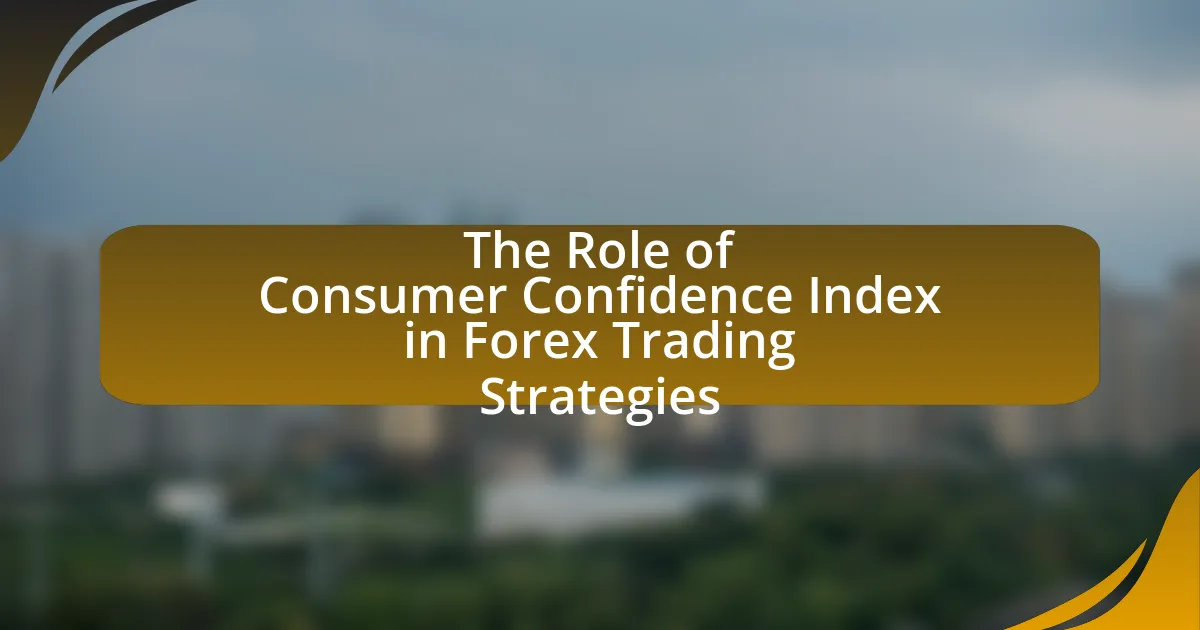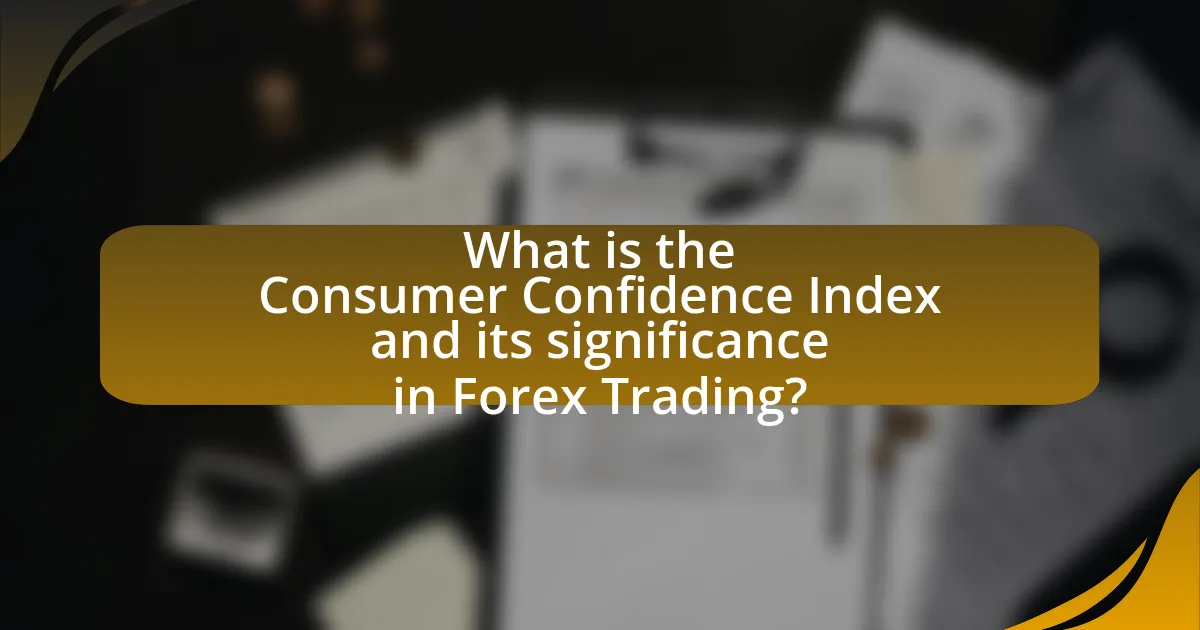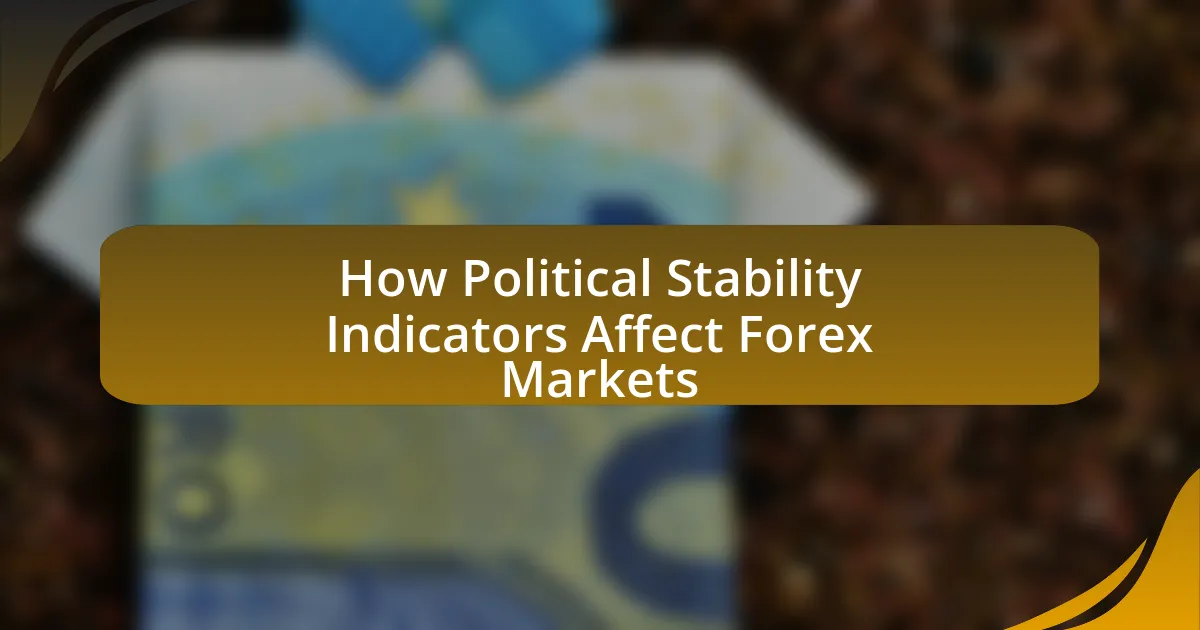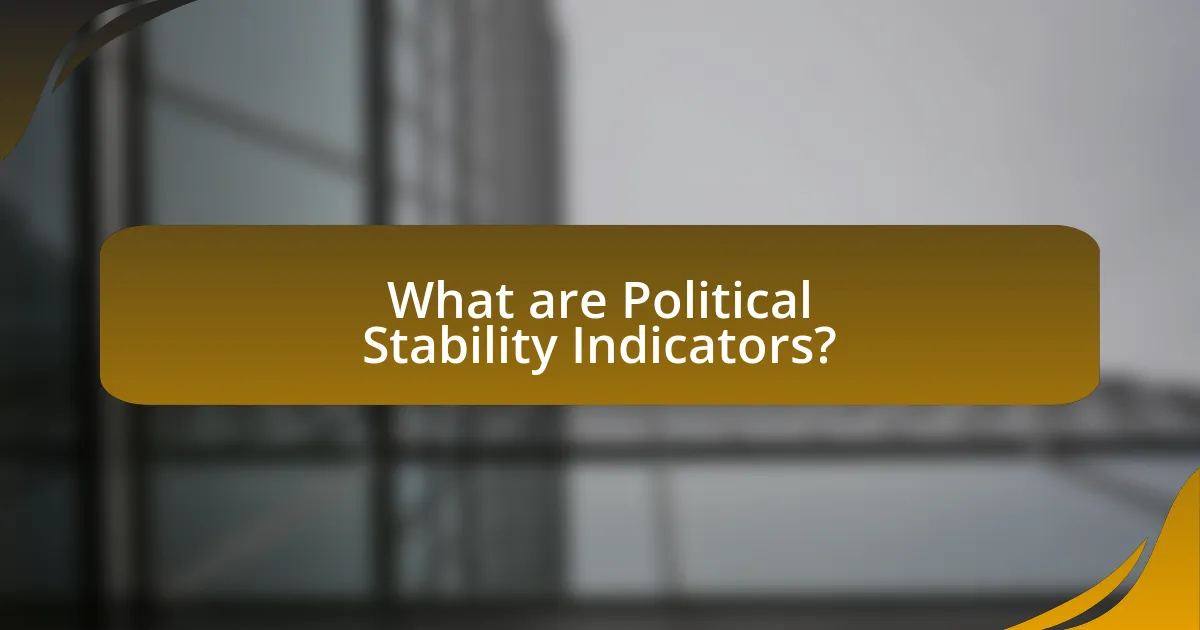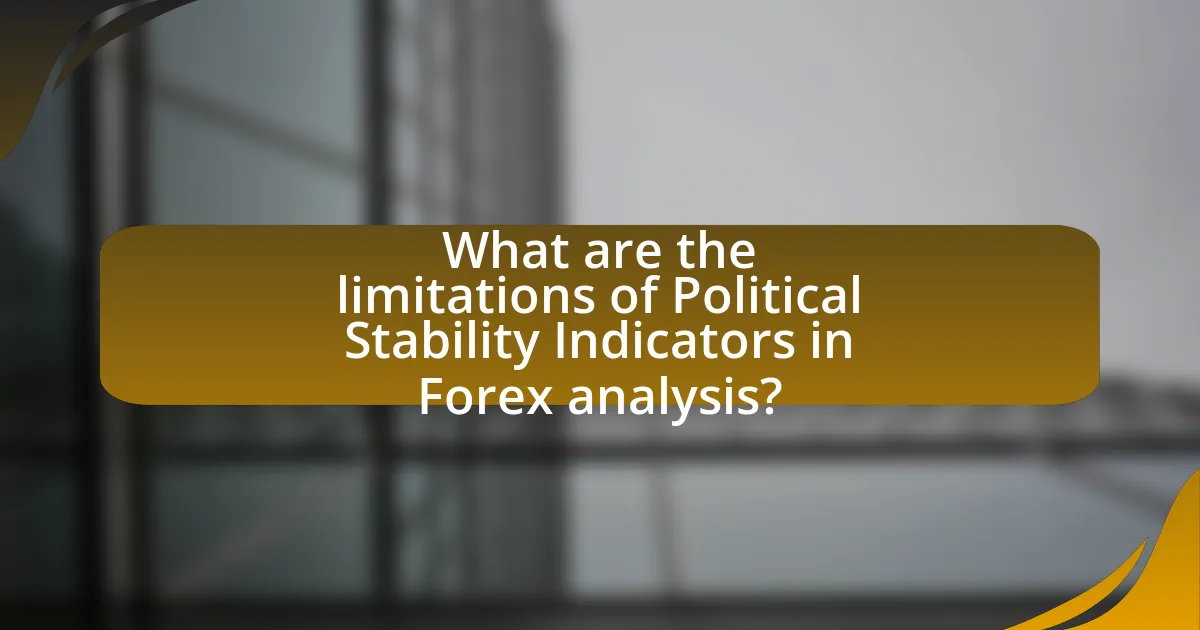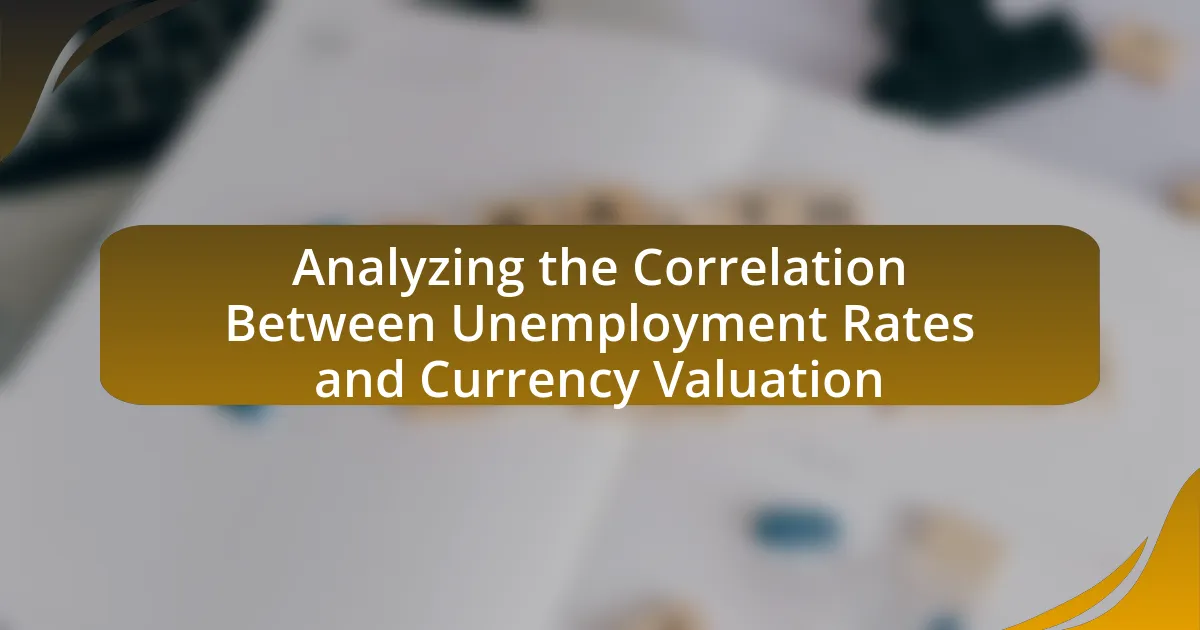Retail sales data is a crucial economic indicator that significantly impacts currency trading by reflecting consumer spending and overall economic health. Strong retail sales figures typically lead to currency appreciation as they signal economic growth and potential interest rate hikes, while weak sales can result in currency depreciation due to perceived economic weakness. Key indicators within retail sales data, such as total sales volume and sales growth rate, provide traders with insights into market trends and consumer behavior. The article explores how retail sales data influences currency values, market sentiment, and trading strategies, while also addressing the risks and best practices for traders in interpreting this data effectively.

What is the Influence of Retail Sales Data on Currency Trading?
Retail sales data significantly influences currency trading by providing insights into consumer spending and economic health. When retail sales figures are strong, they often indicate a robust economy, leading to increased demand for a country’s currency as investors anticipate higher interest rates and economic growth. Conversely, weak retail sales can suggest economic stagnation, prompting traders to sell off that currency in favor of stronger alternatives. For example, in the United States, a 0.6% increase in retail sales in a given month can lead to a strengthening of the US dollar against other currencies, as seen in historical trading patterns following such reports. Thus, retail sales data serves as a critical economic indicator that traders use to make informed decisions in the currency markets.
How does retail sales data impact currency values?
Retail sales data significantly impacts currency values by influencing investor perceptions of economic health. When retail sales figures are strong, they indicate robust consumer spending, which can lead to expectations of economic growth and potentially higher interest rates. For example, a 2021 report from the U.S. Census Bureau showed a 5.3% increase in retail sales, which contributed to a strengthening of the U.S. dollar against other currencies as traders anticipated a more aggressive monetary policy from the Federal Reserve. Conversely, weak retail sales data can lead to a depreciation of a currency, as it suggests economic weakness and may prompt central banks to lower interest rates to stimulate growth. Thus, retail sales data serves as a critical indicator for currency traders assessing market conditions and making investment decisions.
What are the key indicators within retail sales data?
Key indicators within retail sales data include total sales volume, sales growth rate, same-store sales, and sales by category. Total sales volume reflects the overall revenue generated by retail businesses, while the sales growth rate indicates the percentage increase or decrease in sales over a specific period, providing insights into market trends. Same-store sales measure the performance of retail locations that have been open for a year or more, allowing for a comparison of existing stores without the influence of new openings. Sales by category breaks down revenue into specific product categories, helping to identify consumer preferences and demand shifts. These indicators are crucial for understanding consumer behavior and economic health, which directly influence currency trading decisions.
How do changes in retail sales data correlate with currency fluctuations?
Changes in retail sales data significantly correlate with currency fluctuations, as stronger retail sales often indicate a robust economy, leading to currency appreciation. For instance, when retail sales exceed expectations, it typically signals increased consumer spending and economic growth, prompting investors to favor that currency. Historical data shows that in the United States, a 1% increase in retail sales can lead to a 0.5% appreciation in the US dollar against major currencies. Conversely, weak retail sales can result in currency depreciation, as it may suggest economic weakness, leading to reduced investor confidence. This relationship is evident in various economic reports, where currencies react swiftly to retail sales announcements, reflecting market sentiment and economic outlook.
Why is retail sales data important for traders?
Retail sales data is crucial for traders because it serves as a key indicator of consumer spending and economic health. This data reflects the overall demand for goods and services, which directly influences corporate earnings and market sentiment. For instance, a significant increase in retail sales often signals economic growth, prompting traders to adjust their positions in anticipation of currency appreciation. Conversely, declining retail sales may indicate economic contraction, leading traders to consider currency depreciation. Historical trends show that retail sales reports can cause immediate market reactions, with the U.S. retail sales data often impacting the value of the U.S. dollar against other currencies.
What insights can traders gain from analyzing retail sales data?
Traders can gain insights into consumer spending trends and economic health by analyzing retail sales data. This data reflects the total sales of goods and services to consumers, which can indicate the strength of the economy. For instance, an increase in retail sales often correlates with higher consumer confidence and spending, suggesting potential currency appreciation. Conversely, declining retail sales may signal economic weakness, leading to currency depreciation. Historical data shows that significant changes in retail sales can impact currency values; for example, a 0.5% increase in retail sales in the U.S. has historically led to a strengthening of the U.S. dollar against other currencies. Thus, traders utilize retail sales data to make informed decisions about currency trading strategies.
How does retail sales data influence market sentiment?
Retail sales data significantly influences market sentiment by providing insights into consumer spending behavior, which is a key indicator of economic health. When retail sales figures exceed expectations, it typically signals robust consumer confidence and economic growth, leading to positive market sentiment and potential currency appreciation. Conversely, disappointing retail sales data can indicate economic weakness, resulting in negative sentiment and currency depreciation. For instance, in July 2021, U.S. retail sales rose by 0.6%, surpassing forecasts, which contributed to a stronger U.S. dollar as investors anticipated continued economic recovery. Thus, retail sales data serves as a critical barometer for market sentiment, directly impacting currency trading decisions.

What are the mechanisms through which retail sales data affects currency trading?
Retail sales data affects currency trading primarily through its impact on economic indicators and market sentiment. When retail sales figures are strong, they suggest robust consumer spending, which can lead to expectations of economic growth and potentially higher interest rates. This, in turn, can strengthen the currency of the country reporting the positive data. For example, a 2021 report from the U.S. Census Bureau indicated that a 0.6% increase in retail sales led to a rise in the U.S. dollar’s value against other currencies, as traders anticipated a stronger economy and possible Federal Reserve interest rate hikes. Conversely, weak retail sales data can signal economic slowdown, leading to currency depreciation as traders adjust their expectations for interest rates and economic performance. Thus, retail sales data serves as a critical barometer for traders, influencing their decisions based on perceived economic health and monetary policy implications.
How do economic reports influence currency trading decisions?
Economic reports significantly influence currency trading decisions by providing traders with critical data that reflects the economic health of a country. For instance, reports such as GDP growth, employment figures, and inflation rates can lead to immediate reactions in currency values as traders adjust their positions based on perceived economic strength or weakness. Historical data shows that when the U.S. releases strong retail sales figures, the U.S. dollar typically appreciates against other currencies, as traders anticipate potential interest rate hikes by the Federal Reserve. This correlation between economic reports and currency fluctuations underscores the importance of timely and accurate economic data in shaping trading strategies.
What role does timing play in the release of retail sales data?
Timing is crucial in the release of retail sales data as it directly impacts market reactions and trading strategies. Retail sales data is typically released monthly, and its timing aligns with key economic calendars, influencing traders’ decisions based on anticipated consumer spending trends. For instance, the U.S. Census Bureau releases retail sales figures on the 13th of each month, which can lead to immediate fluctuations in currency values, as traders adjust their positions based on the perceived strength or weakness of the economy. Historical data shows that significant deviations from expected retail sales figures can result in volatility in currency markets, underscoring the importance of timing in these releases.
How do traders interpret retail sales data releases?
Traders interpret retail sales data releases as key indicators of consumer spending and economic health. A rise in retail sales typically signals increased consumer confidence and spending, which can lead to currency appreciation, while a decline may indicate economic weakness, resulting in currency depreciation. For instance, in the United States, a stronger-than-expected retail sales report can lead to a rise in the value of the US dollar, as it suggests potential interest rate hikes by the Federal Reserve to curb inflation. Conversely, weak retail sales data can prompt traders to sell the dollar, anticipating a more accommodative monetary policy. This interpretation is supported by historical trends, where significant retail sales changes have often preceded shifts in currency valuations.
What are the potential risks associated with trading based on retail sales data?
Trading based on retail sales data carries several potential risks, including data inaccuracies, market volatility, and delayed reactions. Inaccurate retail sales figures can mislead traders, leading to poor investment decisions; for instance, if the reported sales are inflated due to seasonal adjustments, traders may overestimate consumer spending strength. Market volatility can arise from unexpected changes in retail sales, causing rapid price fluctuations that may result in significant losses. Additionally, traders may react too slowly to retail sales data releases, missing optimal entry or exit points, which can diminish potential profits. Historical instances, such as the 2015 U.S. retail sales report, demonstrated how revisions to initial data can lead to sharp market corrections, underscoring the inherent risks of relying solely on retail sales data for trading decisions.
How can misinterpretation of retail sales data lead to trading losses?
Misinterpretation of retail sales data can lead to trading losses by causing traders to make erroneous decisions based on inaccurate assessments of consumer spending trends. For instance, if a trader misreads a decline in retail sales as a sign of economic weakness, they may prematurely sell currency positions, resulting in financial losses. Historical data shows that in 2020, a significant drop in U.S. retail sales during the pandemic led to a rapid depreciation of the dollar, but subsequent recovery in consumer spending was not anticipated by some traders, leading to missed opportunities and losses. Accurate interpretation of retail sales data is crucial, as it directly influences market sentiment and currency valuations.
What external factors can distort the impact of retail sales data on currency trading?
External factors that can distort the impact of retail sales data on currency trading include geopolitical events, central bank policies, and economic indicators from other countries. Geopolitical events, such as conflicts or elections, can create uncertainty, leading traders to react more to these events than to retail sales data. Central bank policies, including interest rate changes or quantitative easing, can overshadow retail sales figures, as traders may prioritize monetary policy signals over consumer spending trends. Additionally, economic indicators from other countries, such as inflation rates or employment data, can influence currency values, causing retail sales data to have a diminished effect on trading decisions. For instance, if a major trading partner releases strong economic data, it may lead to currency appreciation, regardless of domestic retail sales performance.

How can traders effectively utilize retail sales data in their strategies?
Traders can effectively utilize retail sales data by analyzing it to gauge consumer spending trends, which directly impact currency value. By monitoring monthly retail sales reports, traders can identify patterns that indicate economic strength or weakness. For instance, a significant increase in retail sales often suggests a robust economy, leading to currency appreciation, while a decline may signal economic downturn, resulting in currency depreciation. Historical data shows that in the U.S., a 0.5% increase in retail sales can correlate with a 0.2% rise in the dollar’s value against major currencies. Thus, integrating retail sales data into trading strategies allows traders to make informed decisions based on economic indicators.
What strategies can traders implement based on retail sales data?
Traders can implement strategies such as trend analysis, sentiment assessment, and economic forecasting based on retail sales data. Trend analysis involves monitoring retail sales figures to identify patterns that may indicate future currency movements; for instance, a consistent increase in retail sales often correlates with a strengthening economy, which can lead to currency appreciation. Sentiment assessment allows traders to gauge market reactions to retail sales reports, as positive data can boost investor confidence and drive currency demand. Economic forecasting utilizes retail sales data to predict central bank actions; strong retail sales may prompt a central bank to raise interest rates, influencing currency values. Historical data shows that significant retail sales reports can lead to immediate currency volatility, making these strategies effective for informed trading decisions.
How can traders combine retail sales data with other economic indicators?
Traders can combine retail sales data with other economic indicators by analyzing correlations between consumer spending patterns and metrics such as GDP growth, unemployment rates, and inflation. For instance, an increase in retail sales often signals robust economic activity, which can be cross-referenced with GDP growth rates to validate economic expansion. Additionally, traders can assess how retail sales data interacts with unemployment figures; a decrease in unemployment typically correlates with higher consumer spending, thus reinforcing the implications of retail sales trends. Furthermore, inflation rates can provide context; if retail sales rise alongside inflation, it may indicate that consumer demand is strong despite rising prices, influencing currency valuations. This multifaceted approach allows traders to make informed decisions based on a comprehensive understanding of economic conditions.
What tools and resources are available for analyzing retail sales data?
Various tools and resources are available for analyzing retail sales data, including data analytics software, business intelligence platforms, and statistical analysis tools. Popular data analytics software such as Tableau and Microsoft Power BI enable users to visualize and interpret sales data effectively, while business intelligence platforms like SAP BusinessObjects and Oracle BI provide comprehensive reporting and analysis capabilities. Additionally, statistical analysis tools such as R and Python libraries (e.g., Pandas, NumPy) allow for advanced data manipulation and modeling. These tools facilitate the extraction of actionable insights from retail sales data, which can significantly influence currency trading decisions by reflecting consumer spending trends and economic health.
What best practices should traders follow when using retail sales data?
Traders should analyze retail sales data in conjunction with other economic indicators to make informed decisions. This practice allows traders to understand the broader economic context, as retail sales data alone may not provide a complete picture of consumer behavior or economic health. For instance, correlating retail sales with employment rates or consumer confidence indices can enhance predictive accuracy. Additionally, traders should pay attention to the timing of retail sales reports, as they can significantly impact market volatility and currency fluctuations immediately following their release. Historical data shows that currency pairs often react sharply to retail sales announcements, making it crucial for traders to be prepared for potential price movements.
How can traders stay updated on retail sales data releases?
Traders can stay updated on retail sales data releases by subscribing to economic calendars and financial news platforms that provide real-time updates. Economic calendars, such as those offered by Forex Factory or Investing.com, list upcoming data releases, including retail sales figures, along with their expected impact on the market. Financial news platforms like Bloomberg and Reuters also report on these releases as they happen, offering analysis and context. According to the U.S. Census Bureau, retail sales data is released monthly, making it a consistent source of information for traders to monitor.
What common mistakes should traders avoid when interpreting retail sales data?
Traders should avoid overreacting to monthly fluctuations in retail sales data, as these figures can be volatile and subject to seasonal adjustments. Many traders mistakenly interpret a single month’s increase or decrease as a definitive trend, ignoring the broader context of economic indicators. For instance, the U.S. Census Bureau reports that retail sales can vary significantly due to seasonal factors, such as holidays or weather changes, which can distort the data. Additionally, traders often fail to consider the impact of revisions to previous months’ data, which can alter the perceived trajectory of consumer spending. Understanding these nuances is crucial for making informed trading decisions based on retail sales data.





